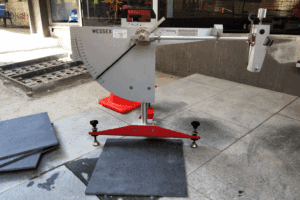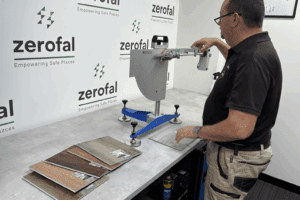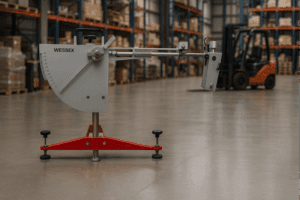Sample Prep 101: What We Need — and What to Avoid
Testing starts with sample quality
Damaged, over-cleaned, unlabeled, or poorly packed tiles can delay certification or distort results. Send minimum 200 × 200 mm samples, packed flat and well protected.
AS 4586–2013 testing relies on consistency, and it starts with your tile sample.
Common issues we see include:
• Tiles arriving with chips or broken corners
• Surfaces cleaned with polish or solvents
• No label to identify which finish is which
• Samples packed loosely so they move and break in transit
To ensure your results are valid and testable:
✓ Do:
• Send at least 200 × 200 mm of intact surface (one piece per finish is ideal)
• Label every tile with finish or product ID
• Disclose if it’s been sealed or coated
• Pack flat on a rigid backing (e.g., cardboard/foam board), wrap well, and immobilise inside the carton to prevent movement and breakage
✗ Don’t:
• Polish, burnish, or solvent-wipe the tile before testing
• Assume we know which tile is which—always label the face
• Leave slider type unstated—note if results are sought for Slider 96 (4S) and/or Slider 55 (TRL)
Zerofal documents sample condition as received. If a tile is inconsistent with its intended use, we’ll flag it before testing begins.
Get our Sample Prep Checklist before you send your next tile.
It saves time and protects your AS 4586–2013 test results.
Yes. Smaller pieces increase edge effects and breakage risk, reducing result reliability.
Pack flat on a rigid backing, wrap well, and immobilise inside the box so nothing moves. Avoid stacking heavy items on top.
Don’t polish or solvent-wipe. Send it as supplied; disclose any factory or field-applied coatings.
State which you need. We’ll advise based on the intended application and finish.
Explore more

Colour, Grit and Surface Finish: How Subtle Differences Change Slip Ratings (AS 4586:2013)
Colour, grit and finish change slip resistance. Learn why P-ratings vary across tile ranges and coatings

Why One Slip Test Isn’t Enough for Product Lines (AS 4586:2013)
Slip resistance varies across colours and finishes. Learn why one AS 4586 test cannot certify an entire product line.

Industrial Slip Resistance: Dust, Boots & Coating Drift (AS 4663:2013)
: Industrial floors change fast. Learn how dust, coatings and machinery reduce slip resistance and why AS 4663 onsite testing is essential.
Stay Ahead of Safety Standards
Join the Zerofal newsletter for actionable insights on slip testing, compliance updates, and smart prevention strategies. No spam – just practical safety advice.
